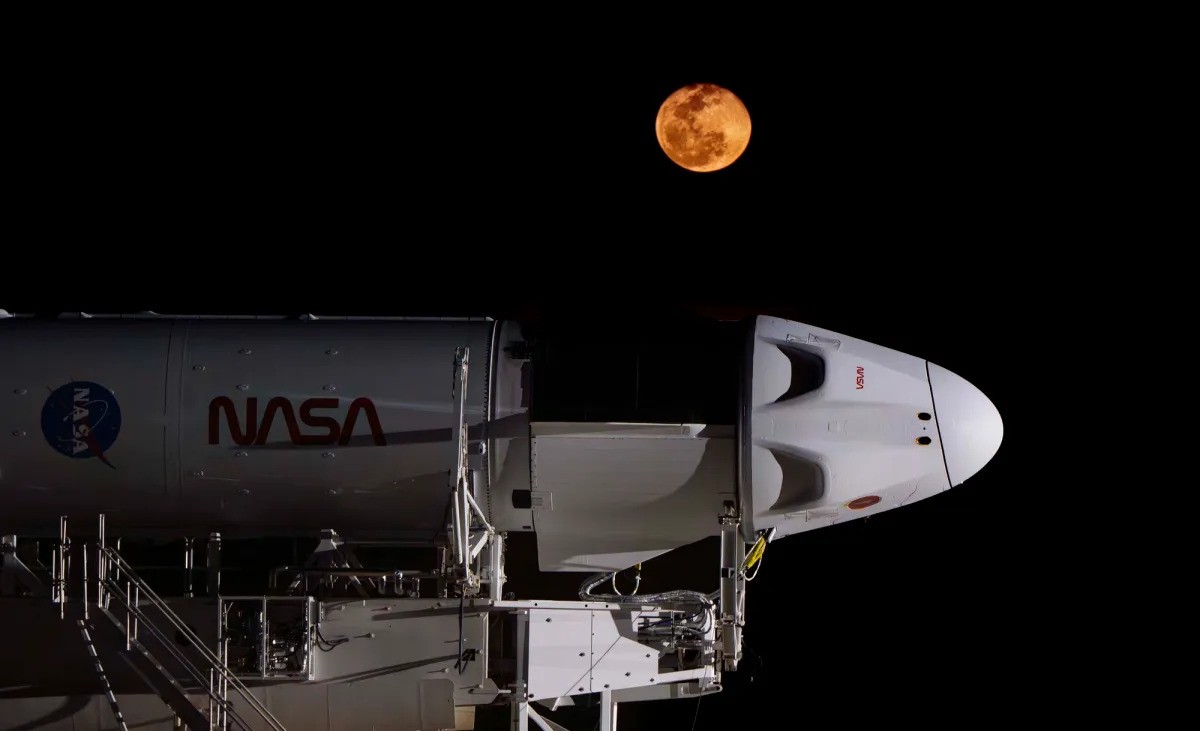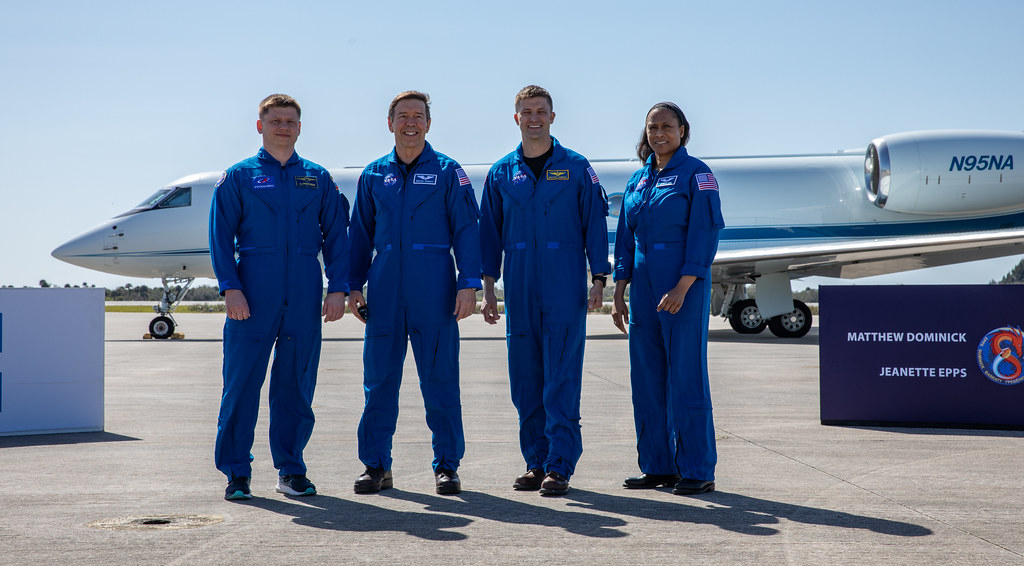SpaceX And NASA To Launch Crew-8 Astronaut Mission To ISS On March 1
SpaceX and NASA to launch Crew-8 astronaut mission to ISS on March 1. NASA and SpaceX are moving forward with a commercial crew mission to the International Space Station as part of a packed schedule of missions to the station this year.
Author:Hajra ShannonReviewer:Paula M. GrahamFeb 28, 202481 Shares26.9K Views

SpaceX and NASA to launch Crew-8 astronaut mission to ISS on March 1. NASA and SpaceX are moving forward with a commercial crew mission to the International Space Station as part of a packed schedule of missions to the station this year.
Following a flight readiness review on February 25th, NASA announced its approval of the Crew-8 mission to the ISS. The launch is scheduled for 12:04 a.m. Eastern on March 1st from the Kennedy Space Center. This timing will allow the Crew Dragon spacecraft to dock with the station at approximately 7 a.m. Eastern on March 2nd.
Crew-8 marks the latest crew rotation mission to the station. It will transport NASA astronauts Matthew Dominick, Michael Barratt, and Jeanette Epps, alongside Roscosmos cosmonaut Alexander Grebenkin, to the station for a six-month stay. For all but Barrett, this flight will be their first. Barrett, on the other hand, will be embarking on his third flight and second long-duration stay on the ISS.
During a media briefing following the flight readiness review, NASA and SpaceX officials disclosed that they were addressing a few minor technical issues concerning the Crew Dragon spacecraft and Falcon 9 rocket. This includes verifying the proper fastening of composite panels on the vehicle and investigating paint discoloration observed on the Crew-7 Crew Dragon currently docked at the station. Steve Stich, NASA's commercial crew program manager, mentioned that this discoloration could potentially alter the vehicle's thermal properties during reentry.
Stich assured that these issues did not seem to be major concerns, stating, "I suspect we'll close these out Tuesday or Wednesday."
A previous issue that seems to have been resolved pertained to straps in the main parachutes known as "energy modulators." These straps are meant to regulate the load on the parachutes as they are extracted from the capsule. During the CRS-29 cargo Dragon mission that returned in December, some of these straps did not function as intended.
However, on the most recent Crew Dragon flight, the Ax-3 private astronaut mission that splashed down on February 9th, the straps worked as intended. Bill Gerstenmaier, SpaceX's vice president of build and flight reliability, stated, "We didn't see any of the energy modulator problems that we've seen on previous flights."
This upcoming flight will mark the fifth for the Crew Dragon spacecraft named Endeavour. It previously flew the first crewed SpaceX mission, Demo-2, in 2020. NASA has currently certified Crew Dragon for up to five flights, but is collaborating with SpaceX to extend that certification to potentially cover as many as 15 flights.
"We're in the middle of doing that work," Stich said, evaluating various vehicle components. "Some are actually approved for 15 flights, some we're still in the middle of working on."
He mentioned that their efforts might lead to extending the lifespan of both the Crew Dragon and its cargo variant to a figure between 5 and 15 flights, at least initially. "I would like to get out to 7 to 10 flights per Dragon, but we'll see where we get to."
Additionally, SpaceX is in the final stages of building a fifth Crew Dragon spacecraft. Gerstenmaier noted that this vehicle should be ready by this fall, with plans for it to potentially fly the Crew-10 mission in 2025. "Whenever NASA wants to go ahead and use that vehicle, it will be available sometime in the fourth quarter of this year."
Preparing For Starliner
Also on the horizon is Boeing’s CST-100 Starliner commercial crew vehicle, set to embark on its long-awaited first crewed flight this spring. The Crew Flight Test (CFT) mission, featuring NASA astronauts Butch Wilmore and Suni Williams, is currently slated for launch on April 22nd, as stated by Stich.
"We've worked through a number of issues that delayed the launch from last summer and closed those out," he noted. This included conducting a final parachute test in early January to validate design changes aimed at enhancing its strength. Stich confirmed the success of this test, with no further parachute tests scheduled before the CFT launch.
Additionally, workers have replaced flammable tape in the Starliner spacecraft and resolved in-flight anomalies from the OFT-2 uncrewed test flight in May 2022. "Right now things are looking good for, towards the end of April, launching Starliner."
The upcoming launch will be integrated into a tightly packed schedule of missions to the ISS. According to him, the Crew-7 Crew Dragon mission is set to undock no sooner than March 8th. This will open up a docking port for a cargo Dragon mission, CRS-30, planned for mid-March.
The cargo Dragon is expected to stay at the station for approximately a month. Following its undocking, the Crew-8 Crew Dragon will transition from the forward to the zenith docking ports, clearing the way for the Starliner to dock at the forward port.
"Some future launch date adjustments for even Starliner might happen just because of this busy timeframe," Stich said.
Launching From Pad 40
The CRS-30 mission is presently set to launch from Space Launch Complex (SLC) 40, marking the first mission to utilize the crew and cargo access tower constructed by SpaceX at the pad. This development will enable SLC-40 to accommodate Dragon missions that were previously only able to launch from Launch Complex 39A.
"We've got a good plan laid out to get everything certified and ready to go fly for that time," Gerstenmaier said. "We'll be in good shape for CRS-30."
Having the capability to launch Dragon missions from SLC-40 offers redundancy in case of issues with LC-39A. It also helps alleviate launch pad congestion, as LC-39A is tailored for Falcon Heavy launches. SpaceX additionally modified LC-39A to facilitate the fueling of Intuitive Machines’ lunar landers with liquid oxygen and methane propellants just before launch.
As a result, Crew-8 experienced a minor delay to accommodate the IM-1 mission, which launched on February 15th. "We were trying to sort of thread a needle," Stich said, finding a launch date for Crew-8 that came after the February launch window for IM-1 but also before a March window had IM-1 slipped. "We adjusted our date a few different times to protect as many options as we could."
As a result, Crew-8 faced a delay of approximately one week, as it is also scheduled to launch from LC-39A. "Who would have thought, five or six years ago, that the competition for launch, or the constraint to launch, would be a launch pad?" remarked Dominick, the commander of Crew-8, upon arriving at the Kennedy Space Center on February 25th. "We delayed our launch a few days because there’s stiff competition to get out there to 39A. It's not a rocket constraint, it's a pad constraint."

Hajra Shannon
Author

Paula M. Graham
Reviewer
Latest Articles
Popular Articles
